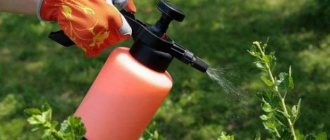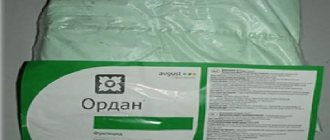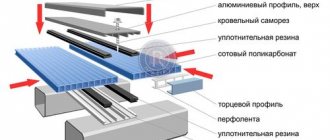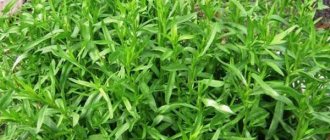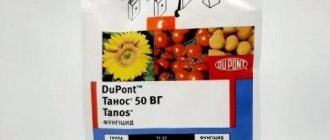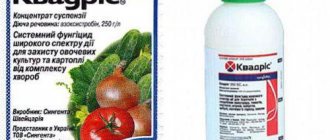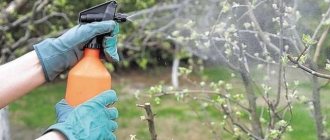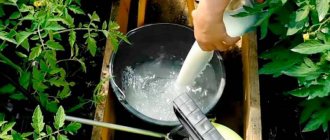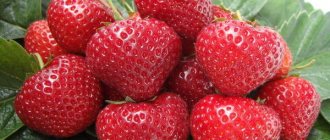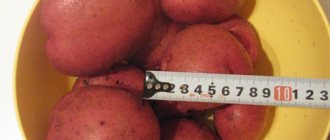When to use Hom
According to the instructions for use, the fungicide Hom is recommended for use in the initial stages of fungal infections, regardless of the phase of plant development.
Food crops
Khom is used to protect tomatoes from brown spot, late blight and macrosporiosis. The drug is effective against anthracnose, bacteriosis, peronospora and cercospora, affecting onions, cucumbers, potatoes and beets. With the help of Homa, fruit trees and shrubs are protected from fruit rot, scab and leaf curl. The optimal dosage of fungicide for treatment is 40 g of the substance per 10 liters of water. The recommended number of treatments is 3-5 times per season.
Treatment with the drug is stopped 2-3 weeks before harvesting.
Ornamental plants
Garden and home shrubs and flowers are treated with a 0.3% Homa solution (concentration - 30 g of the drug per 10 liters of water). After spraying with a fungicide, it is recommended to temporarily isolate indoor plants affected by the fungus from healthy ones. The remaining solution should not be washed off or washed off from the leaves of treated orchids (in this case, the procedure will not give the desired effect). It is enough to just let the flowers dry naturally.
Purpose and application of "HOM"
The drug "HOM" is mainly used in private farms to protect cultivated crops from diseases caused by fungal infection.
Examples of plant diseases caused by fungal infection
| Potato | Late blight, macrosporiosis |
| Grape | Mildew, anthracnose |
| Sugar beet | Cercospora |
| Tomatoes | Late blight, macrosporiosis, brown spot |
| cucumbers | Downy mildew, anthracnose, bacteriosis |
| Onion (except feather bow) | Downy mildew |
| Hop | Downy mildew |
| Stone fruits (plum, peach, apricot, cherry, sweet cherry, etc.) | Clusterosporiasis (hole spotting), coccomycosis, moniliosis, curliness |
| Pome crops (apple, pear, quince, etc.) | Scab, moniliosis |
| Decorative and floral crops | Rust, spots |
Contraindications for use
Hom is a preparation for treating plants that can be used throughout the growing season - from early spring to late autumn. The only exception is the flowering period of fruit, vegetable and ornamental crops (the fungicide poses a danger to pollinating insects).
Spraying of plants with Hom should be carried out no later than 3 weeks before harvest (for grapes this period increases to 1 month). It is strictly forbidden to use the drug if it has expired.
Protective properties of the drug
Results of “Homa” against late blight on tomatoes:
- effectively affects a number of fungal pathogens - rot, late blight;
- It is not addictive and helps from year to year.
Treatment for macrosporiosis:
- with signs of illness;
- before transplanting seedlings;
- 15 days after transplantation;
- last spraying after 12 days.
When infected with late blight, septoria:
- sprayed at the initial stages;
- then process at intervals of 10-14 days.
For spotting:
- irrigate when the first symptoms appear;
- then process after 10 days;
- then spray once every 14 days as needed.
The drug has a good effect when used for prevention during epidemics. Thus, according to reviews from farmers, if you irrigate tomatoes with Hom to prevent late blight, you can avoid the disease.
At the first signs of late blight, 2 irrigations with an interval of 7-10 days are enough and there will be no more new lesions.
Advantages and disadvantages
The advantages of the drug include:
- high effectiveness against a wide range of fungal diseases;
- lack of habituation of pathogenic microorganisms;
- safety for plants;
- compatibility with most other products for the care of fruits and vegetables;
- ease of preparation and use.
The drug also has disadvantages:
- easily washed off by rain;
- destroyed by exposure to oxygen;
- may cause burns to plants at elevated air temperatures.
Description and composition
The powder known to many gardeners is copper oxychloride. Serves as an excellent replacement for Bordeaux mixture. It is odorless and bluish-green in color. It is prepared extremely quickly - diluted with water and the solution is ready for use.
How does it act on pathogens? The product penetrates the cells and disrupts the mineralization process. Cells die simultaneously with pathogens. Powder crystals are insoluble in organic media and water. They are not affected by high temperatures and sunlight.
"Hom" is not addictive. Neutralized by alkaline solutions. When exposed to alkali, it decomposes within 6 months.
Compatibility of “Homa” against late blight on tomatoes with the following preparations:
- "Inta-Vir"
- "Fufanon"
- "Epin."
It cannot be combined with alkalis due to the destructive effects, as well as with Aktara.
Instructions for use
Cooking process
To prepare a working solution of Khoma, first dilute the recommended dose of the drug in a small amount of water (it is available in the form of a wettable powder). When the substance dissolves, add more water to the resulting liquid to the required volume. In order for the solution to better adhere to plants during processing, you need to add a little skim milk (1% of the total volume of liquid) to it.
To prepare the fungicide, you should take a plastic container; metal containers will quickly oxidize under the influence of the active components of Khoma.
Processing time and waiting times
The drug Hom is used to spray plants against diseases 3 to 6 times per season at any stage of development except flowering. To carry out the procedure, choose a clear, windless day. It should also not be too hot outside (no more than +30°C).
Forum statistics
208686 Messages in 1636 Topics from 5641 Users. Last user: Cerberus Last message: “Rooting wine cuttings...” ( Today at 06:57:45) Latest messages on the forum.
Now on the forum
44 Guests, 16 Users
Users in the last 15 minutes: Svetlana Korotina, Tikhii, kvg, Dmitry Anatolyevich, Evgeniy30, Ilya 77, Evgeniy 50, Mikhail Alekseevich, thanatos, dralexk1, Oleg Ivanovich Zavezen, Vova Kapran, zsb, leonidych, Ivan Levin, yotmast [Blocked] [ Section Moderator] [Forum Moderator]
Maximum online today: 112 . All-time maximum online: 2758 (28 July 2021, 17:22:51)
Users who visited the forum in the last 24 hours
Total: 321
(Visible: 320, Hidden: 1) 1963, Quiet, Svetlana Korotina, kvg, Dmitry Anatolyevich, Ilya 77, Evgeniy30, Evgeniy 50, thanatos, Mikhail Alekseevich, dralexk1, Oleg Ivanovich Zavezen, Vova Kapran, leonidych, zsb, Ivan Levin, Oleg56, yotmast, 25nata35, ElenkaF, Linx, vladimirM, GALINA ANOKHINA, G.V, Alexey V, Casperzrq, Elvira2017, Alexander Vl., Natasha, DIL, Lyubov S., YurSanych, Capricorn, Nikolai Mikhailovich, Alexander K, vlad51, Andrey 31, Evgeniy 163, Evgen_Ev, Tatyana Provorova, Skif, Victor B, Nikolay Lipunov, sergei, Evgeniy52, 77volt, hanter64, Tatyana B, kosmos, slavalimon, Mikhail77, skier, rivaN, y_fed, Kazak, Igor Sergeevich, Victor55, Andrey15 , OlgaOs, DorontsovPeter, Chapai, Buba, Mikhno Alexander, alexsandr, Amber7394, SANYCH, Pioneer, DimaRostov, Dmitry 77, Verona, DED2, MaxL, nicson7, Vasily V., Kenig, Alexander Taganrog, VitaliySD, Dmitry-Kozadoev, Realist, Alexey Deminov, Elektronik_t, Galinka, DSW, Alexey Agryzkov, Taker, Kadyrov, bonami, antar, Sergey 1965, Andrey Gladilin, SvetlanaBondareva, tolya, Nadezhda Grig, Igor Naumov, Igor F., Pavel 64, Volgar, Roman Fedorovich, igor222, max2008-01, Yves Yves, Vika, Andrey Lis, lomakin1969, linalenadavi, gheo55, Sergey Chistokletov, mystic69, Grinya, Cherkessk, Andrey76, Serzh1978, Haus, , Vladimir-kanevskaya, Iglika, Marina Protasova, Morgana, Igor K, Tatyana Rogacheva , Polyanina Ekaterina, Yuri _Saransk, Sergey 61, Armagnac, Alexander48, tsv, Verbitsky E.I., Lyudmila, Victoria Aleksandrovna, Vladimir Berdnikov, and.drew, Maximilian, Denisovich, Yura Soshnin, Elena Z, Sasha57, Natalia Nikolaevna, Gaivoronsky Yuri, weather forecaster, Lydia58, Vyacheslav03, Sa-shura, irahelm, Pitko, Volodya R, Volgogradka, Alexander71, Natalya1968, Valentina Ivanovna, freesia, L.A.P., Lyuda5, dayton, marlin64, Tanyusha, Vasily1111, Yuri 14, Dmitry Nikolaevich, Oleg Filippov, Valery Rastorguev, Kalevanych, AlexsandrP, LeXa_KoT, Sergey Yuryev, Inna161, cfibr, stenlly2010, rambo, maxbul, Nadymchanka, Eduard., nik2, serginio, potap05, nadia, VeraNiK, Sergey Tashchiyan, Amateur gardener, Alexander-ask-34, Vladimir Kostochkin, Wintel, Vyacheslav Vladimirovich, mers, Izhitsa, Ramiz, Akhmed, gardener, P7N, alexss, Zaur, TITOVA LYUBOV, Sergey Ko, Tatyana Volzh, Grandfather Young, pioneer-2, ketch, Bublichenko Alexander M, Ildar, Sergei Vasilevi4, Helga, Marshal, Vasily 53, Den, Alexander150, Yavgen3678, vikbublik, Valerie, Henry, Alexander_89, nick041, Svetlana Streletskaya, Antrikan, neposny, yak, Vladimir Buturlakin, Yagodka, Aprel, Antonk1983, PS- URA, spotlight, Nikolay S., Andrey68, Alexander565, Gennady163, AndSanych, Alexander Gai, Alex65, kdm57, oleg9f, Dmitry Badaev, Belgorodets, Yura, formula1, Cerberus, 64nikolay64, Yuri Semyonov, Kryn, N.A. Sokolov, TIS , Guram, sem_en, Alexander Smirnov, AlexanderD, Spikina Galina, Anatoly Sivkov, Snezhinets, Alexey Sh., mira567, Mst, victor_, Vadim, Salex, Yuri P., Bizon, Alexander Sh, Vardan, cecet71, Coltrane, Alexander 61, Andrey Beribesov, Efimych, boltik, Vladimir-27, Vovka, LOZA, ilja, Unter, Gela, Irinka, NatalyaMed, ichtiandr, Sergey Lomonosov, krasnovlad1, Irene, Pirko Alexander, Khramov, YATATYANA, , Vitaly Kholkin, Mihalych., ni, Vladimir Kovba, Rita, nau_63, Yuri72, Lisav, niy1, Timofey, NelyaS, MikhAf, Alexander Zinoviev, Zayac, SNovichek, Tatyana A., VDV, Dmitry-Ivanovich, Saisan, slaviking, court, Vladimir Shilov, Oleg Swedes, Sergey2017, Masha_gardener, Burundukx, Lamo, Oleg A., arnyusha, Leonty Yarygin, Vyacheslav-56, lena, Igor 31, Sergey 31, Zhorzhovich, nut lover, Enych, turist, Ewgeniy, Ivan Shmelev, atseton, Liza
Safety regulations
The drug Hom belongs to class 3 chemical hazard (that is, it is moderately dangerous for humans and animals). The following precautions should be observed when using it:
- protect the skin with thick fabric clothing, the respiratory tract with a respirator, and hands with gloves;
- do not work with fungicide for more than 4 hours in a row;
- do not drink, smoke or eat during processing.
Reviews of the drug Hom
Valery Nikolaevich. We treat all berry bushes and fruit trees with Hom. We use it on cherries, sweet cherries, plums, and apple trees. A very effective remedy, it is enough to carry out one treatment per month. It is advisable to keep bees away from treated trees for at least one day. Well, don’t splash it into drinking water or food.
Eugene. Very good for potatoes and tomatoes. There was late blight, I treated everything with this “Home”. The disease has passed. The most important thing is that after treatment it does not rain, then everything will be washed off and you will need to spray again. I also try to keep children and animals away from the treated plantings on the first day.
Svetlana Vasilyeva. I've been using Hom for three years now. I process tomatoes, cucumbers, potatoes. Helps well against late blight and bacteriosis. I dilute a ten-liter bucket of solution and spray everything at once. It is important to catch cool weather, for example, morning or evening; it cannot be processed in the heat.
Igor. It helps a lot. I grow grapes and aracnose appears from time to time. Then I take “Hom”, dilute a 40-gram bag into 10 liters and go ahead. It is believed that the fungicide is almost not harmful to humans, but one time I forgot and smoked it. I had to solder myself with activated carbon.
Analogs
An alternative to Khomu in the fight against fungal diseases can be drugs such as:
- Oksikhom, Polykhom, Kuprikol are fungicides based on the same active ingredient;
- Bordeaux mixture is an effective copper-containing preparation;
- Fitosporin is a biological agent against a wide range of pathogens;
- Cupritox is a copper sulfate-based fungicide, also used in tank mixtures.
The listed fungicides effectively cure brown spot, scab, late blight, rust, powdery mildew and many other diseases of cultivated plants.
The drug Hom is an effective and easy-to-use fungicide for maintaining the health of the garden. Regular preventive and therapeutic measures with its use can “reduce to zero” all possible harm caused by fungal infections to cultivated plants.
What kind of drug is this
"Hom" is a fungicidal drug and belongs to contact pesticides of inorganic origin. It is able to resist pathogens of fungal and bacterial diseases.
In comparison with copper sulfate and Bordeaux mixture, used for the same purpose, it has a number of advantages. It is used on open and closed ground.
The drug is a copper chloride salt, available in the form of a green-blue powder . It is not used in its pure form; it is diluted in water before processing. Salt crystals are not destroyed by sunlight in hot weather.
How it works
The drug is widely used not only in the agricultural industry , but also in greenhouses, greenhouses and small vegetable gardens.
Hom has a wide range of uses, but is most often used in the fight against disease. It is also believed that the product accelerates plant growth and fruit ripening. The active ingredient in Khoma is copper oxychloride . Getting into the cells of pathogens, it interferes with the process of mineralization of organic substances, which leads to their failure, as a result of which the microorganism dies.
Practice has shown that after treatment with the drug, rot, mold and stains stop spreading. “Hom” affects pathogens on the surface of stems and leaves without penetrating inside.
The drug can be used even when the first symptoms of fungal infections appear, but the disease has not yet been identified.
Advantages and disadvantages
When deciding to treat the beds with a preparation, you need to take into account its strengths and weaknesses .
Advantages:
- forms a film on plants that protects against infection;
- acts on the surface of the tomato without penetrating into the tissues;
- destroys the cells of the pathogen;
- does not cause resistance in pathogens;
- possibility of multiple treatments;
- does not accumulate in the plant;
- the drug completely disintegrates after six months;
- safe for humans if instructions are followed;
- has a low price.
In comparison with other means for the treatment and prevention of diseases, “Hom” has a number of advantages. The drug is less toxic, does not burn the skin, is easier to prepare and can be combined with other products.
Flaws:
- is not a medicine, it helps only as a preventive measure against diseases;
- is not able to destroy the pathogen inside the tissues;
- easily washed off with water;
- uneconomical consumption;
- unpleasant odor;
- has a third hazard class, toxic.
Preparation of the solution
During fruiting, plants are rarely treated with Hom. It is best to carry out the procedure, for example, during flowering (if the area is not inhabited by bees for which the product poses a danger). But treatment with a fungicide will be effective only if the proportions of the drug are maintained and the solution is correctly prepared to spray the plants.
Proportions
The prepared solution cannot be stored, so always dilute the drug for 1 procedure. To do this, it is important to correctly calculate the amount of product based on the area planned for treatment. In the case of tomatoes, the norm is 1 liter per 10 square meters. m. To get 1 liter of ready-made Khoma, you need to dilute 4 g of the drug in the specified amount of water. Knowing these proportions, you can easily determine how much fungicide you should buy to treat your plantings. However, keep in mind that if emergency spraying is planned during fruit ripening, more of the drug may be needed.
Did you know? China today grows up to 16% of the world's tomatoes, being the largest supplier of tomatoes on the planet.
How to prepare the drug
For standard preventive treatment, use the following recipe - dilute 40 grams in 10 liters of water. drug. First you need to prepare a concentrate: dilute the powder in 70-100 ml of water. Then, stirring constantly, add water to the required volume. If "Hom" is used according to the instructions, then phytotoxicity can be avoided.
Important! To prepare the solution, it is better to use warm, settled water.
1 liter of solution is enough for about 10 sq.m., the consumption can be increased if you need to spray tall varieties that have more green mass. The solution remaining after the procedure cannot be stored, so when preparing it, it is necessary to take into account the area of the garden.
Consumption rate
The working solution is prepared immediately before spraying infected crops, according to the instructions.
The prepared solution is used on different crops in different volumes, as follows:
- on greenhouse tomatoes and cucumbers, the consumption rate is low and amounts to 2000 ml. per 10 square meters;
- in vineyard conditions, the drug is used at a rate of 1500 ml. for the same area;
- potatoes are processed with a flow rate of 1200 ml. per 10 square meters.
Immediately before spraying, prepare a working solution
Main signs and methods of spread of late blight
Late blight or late blight is a disease of tomatoes and other crops from the nightshade family, including potatoes. Late blight is caused by pathogenic fungi. Weakened plants are usually the first to get sick. Brown spots appear on the stems and leaves. If you look closely, you will see a delicate white fluff on the other side of the leaf. These are zoosporangia that are easily transferred from plant to plant. In a humid environment, spores of the causative agent of the disease emerge from them, which enter the plant through stomata or germinate directly through the top layer of tissue.
As a rule, potatoes are the first to suffer from late blight. Fungal spores can be found on healthy-looking seed tubers and in the top layer of soil. From diseased potatoes, the disease spreads to tomatoes. The time from potato disease to tomato disease is only a week, maximum ten days. In sunny weather, spores may die. Wet and cold summers with sudden temperature changes and fogs contribute to the rapid spread of late blight.
Attention! Never plant tomatoes next to potatoes. When treating tomatoes prophylactically against late blight, do not forget to treat potatoes.
This will not only reduce the risk of disease in both crops, but will also increase the growing season of potatoes, and, therefore, their yield. Hom-treated potatoes do not like the Colorado potato beetle.
In order to prevent late blight spores from infecting tomatoes, it is necessary to create a protective layer on the leaf surface of the plants, and also to treat the tomatoes with a substance that, by infecting the spores of the pathogen, would destroy them. The drug Hom meets each of these requirements.
Action of the fungicide
Also check out these articles
- Fungicide Hom
- Bordeaux mixture in gardening
- Karate
- How do I get to the library
The active ingredient is copper oxychloride in the amount of 861 g/kg. It has a bactericidal and fungicidal effect on microorganisms. It works best in the early stages of the onset of the disease, but can also be used successfully later. After spraying the diluted product over the plantation, the drug applied to the leaves and stems of the crops prevents fungi from penetrating into them. The protective effect is observed for up to 12 days.
Active ingredient – copper oxychloride in the amount of 861 g-kg
Interesting!
When treating potatoes with the fungicide Hom, the drug, in addition to protecting against diseases, also repels the Colorado potato beetle and destroys its larvae.
